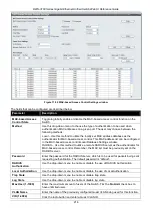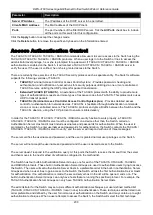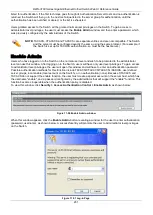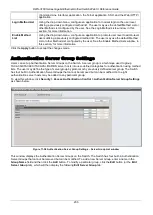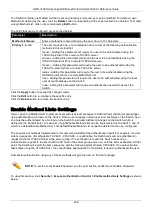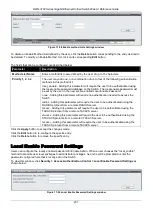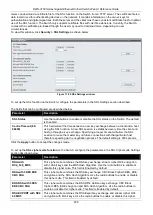
DWS-3160 Series Gigabit Ethernet Unified Switch Web UI Reference Guide
225
Figure 11-44 BPDU Attack Protection window
The fields that can be configured are described below:
Parameter
Description
BPDU Attack
Protection State
Click the radio buttons to enable or disable the BPDU Attack Protection state.
Trap State
Specify when a trap will be sent. Options to choose from are
None
,
Attack
Detected
,
Attack Cleared
or
Both
.
Log State
Specify when a log entry will be sent. Options to choose from are
None
,
Attack
Detected
,
Attack Cleared
or
Both
.
Recover Time (60-
1000000)
Specify the BPDU protection Auto-Recovery timer. The default value of the recovery
timer is
60
. Tick the
Infinite
check box for not recovering the port.
From Port / To Port
Select a range of ports to use for this configuration.
State
Use the drop-down menu to enable or disable the protection mode for a specific
port.
Mode
Specify the BPDU protection mode. The default mode is shutdown.
Drop
– Drop all received BPDU packets when the port enters under attack state.
Block
– Drop all packets (include BPDU and normal packets) when the port enters
under attack state.
Shutdown
– Shut down the port when the port enters under attack state.
Click the
Apply
button to accept the changes made for each individual section.
Loopback Detection Settings
The Loopback Detection (LBD) function is used to detect the loop created by a specific port. This feature is used to
temporarily shut down a port on the Switch when a CTP (Configuration Testing Protocol) packet has been looped
back to the Switch. When the Switch detects CTP packets received from a port or a VLAN, this signifies a loop on
the network. The Switch will automatically block the port or the VLAN and send an alert to the administrator. The






